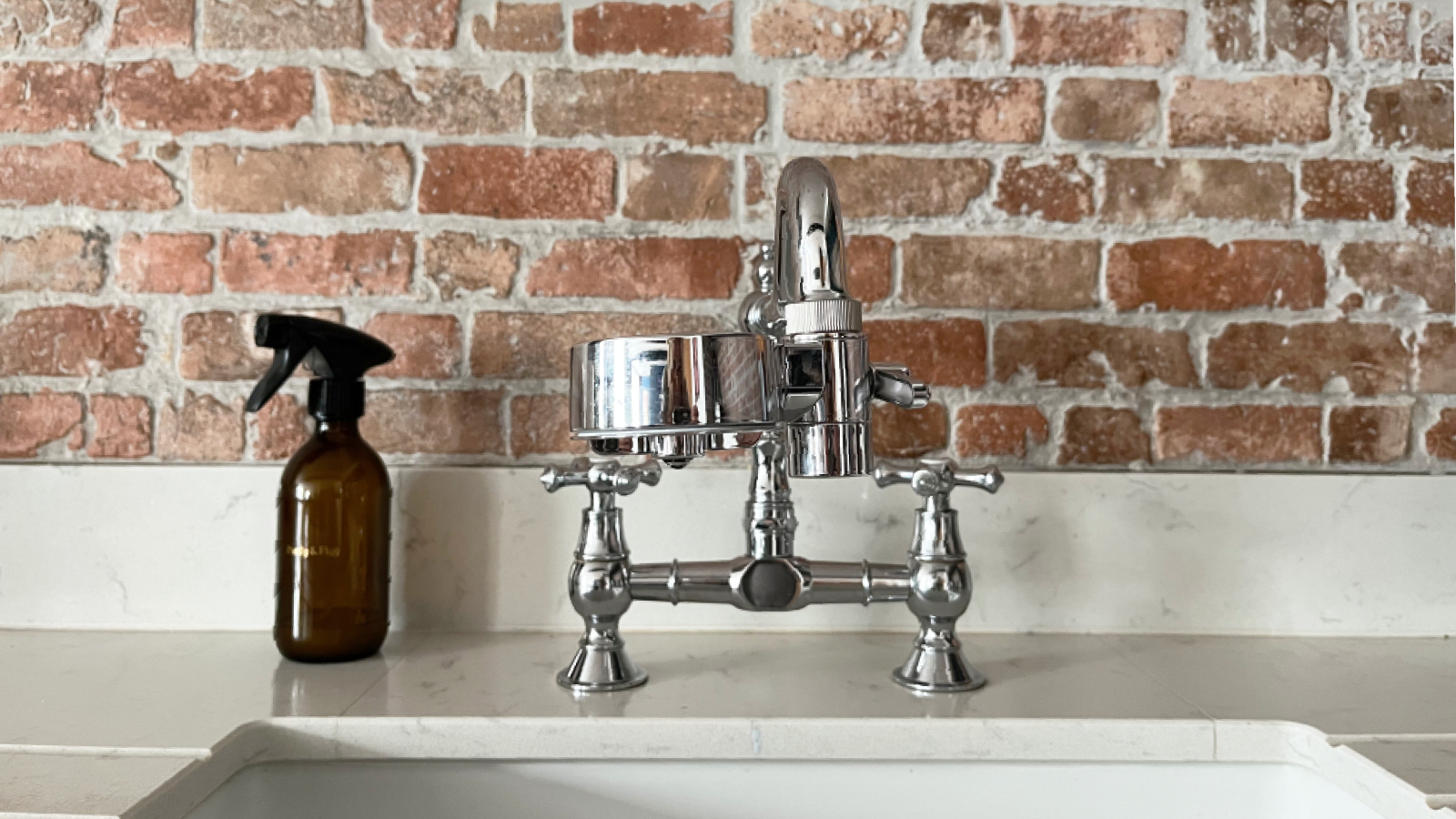How to zone a garden and transform your outdoor space to reflect your lifestyle
Zoning your garden helps to strike the perfect balance between functionality and visual appeal. But there's a lot more to it than simply sticking up a privacy screen and arranging a couple of sofas in an L shape to create 'a relaxation space'.
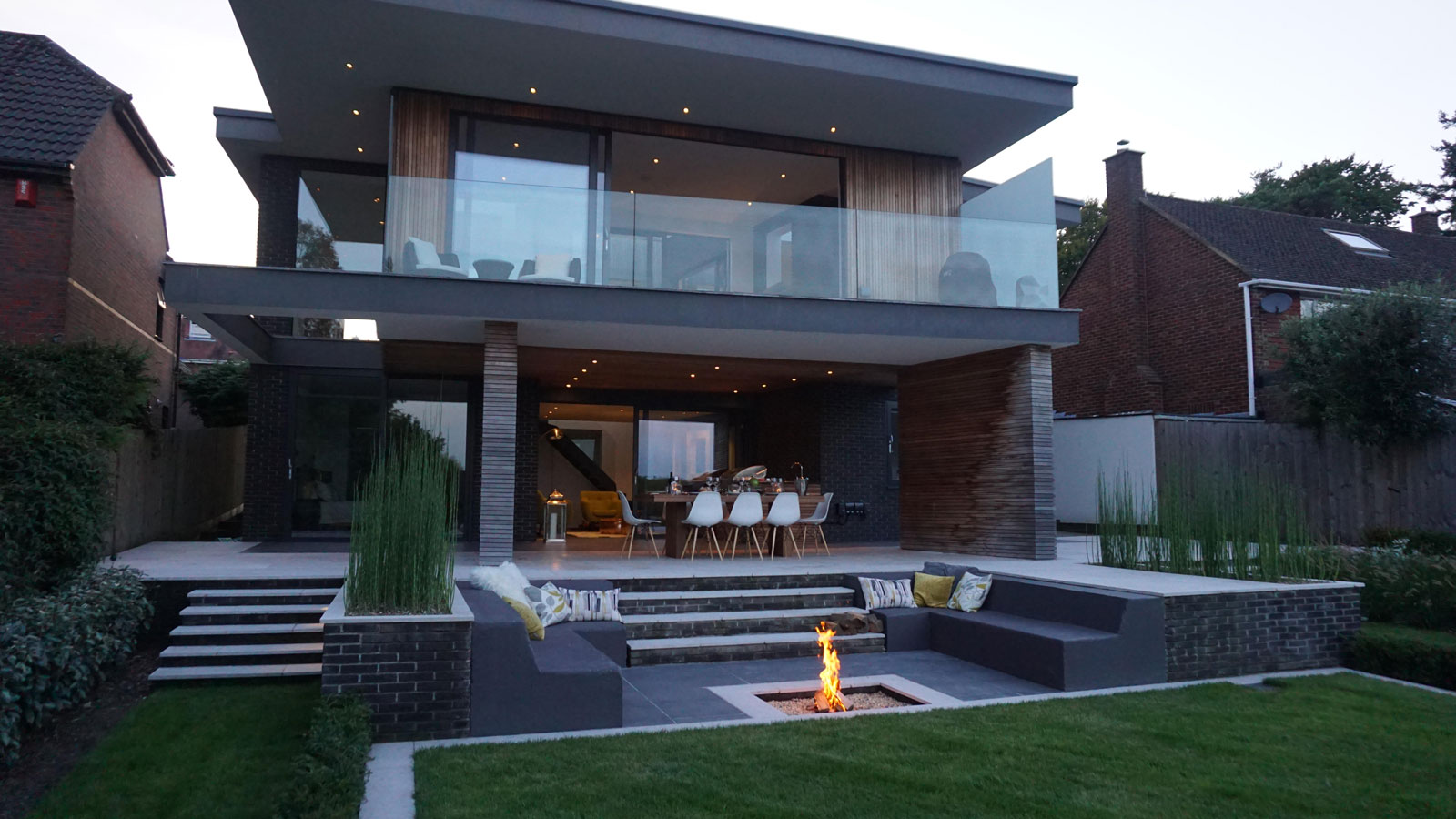
Finding out how to zone a garden is the first step to making your outdoor space more user friendly. Put simply zoning is the process whereby areas of a garden are sectioned off for specific uses such as relaxation, dining, a grow-your-own space or kids' play area.
Whether you have a large garden that lacks a sense of intimacy or you're trying to stretch a small garden to get the max out of it, finding out how to zone your garden can help you create a very liveable outdoor space that feels like an easy extension of your home.
There's a lot to consider once you've chosen your zoning spot. Is it too sunny or too shady, is it too close to the house to feel like a garden retreat, or too far away to be practical. And what about considerations like electricity for lighting the space efficiently.
Help is at hand with our expert guide to give you the lowdown on all the points you need to consider before you start out on the process of zoning as part of your garden design ideas. We will help you decide on the best site, one that's fit for the purpose you have in mind, as well as offer guidance on how to transform it into a space that ticks all the boxes.
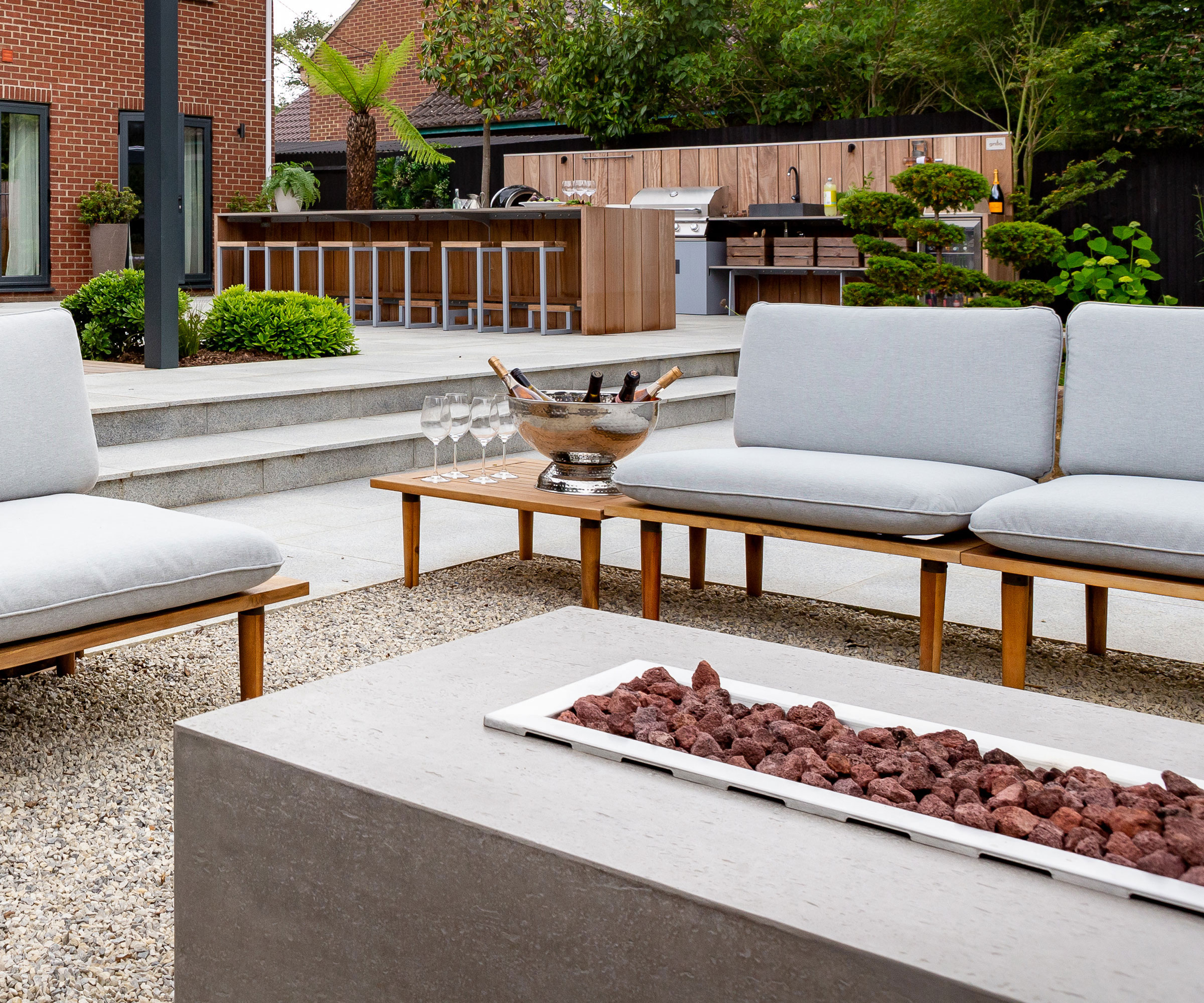
Practical considerations: planning garden zones
"Zoning is about the creation of dedicated spaces within a garden based on functionality, flow and ultimately location," says landscape designer Stuart Charles Towner. "The layout of a garden can be driven by many ideas and design concepts but true zoning stems from location, from proximity to the house, the sweet spot in the corner of the garden that captures the sun, or the break in a hedge opening a view to the wider landscape."
Creating a successful zoned garden design as part of your garden landscaping ideas is a question of thinking about how these different elements will work. Stuart says that without taking these factors into consideration, which are sometimes driven by the site and sometimes by the client, a design remains hollow, a series of ingredients thrown together with no purpose.
"Always think of your garden as part of your home," says garden designer Manoj Malde, author of Your Outdoor Room: How to Design a Garden You Can Live In. "A garden can be a place of seclusion, but often it is a social space where you can bring family and friends together. Depending on the size, you may wish to divide it into areas for different purposes and structure the design around who will be using it."
One of the first questions to ask yourself is how you want to use the garden and what elements you want to include, then take into account the various practical considerations to ensure you end up with the best design.

Stuart Charles Towner is a multi-award winning garden designer and consultant. His designs are a meeting point of the old and the new, in perfect harmony with their surroundings. Stuart's projects range from small domestic roof terraces and gardens to larger unique gardens and landscapes across the UK.

Manoj Malde is an award-winning garden designer and TV gardener, known for his vibrant style and bold use of colour. Manoj is a familiar face due to his presenting work on the TV shows Your Garden Made Perfect and Garden of the Year. Manoj is also an RHS show judge, RHS ambassador, and Chelsea Flower Show medallist.
1. Assess your needs and lifestyle
Dividing a garden into distinct areas serves several purposes, with the main one being the provision of spaces or 'rooms' for different activities. So first come up with a list of potential ideas for zoned areas according to how you envisage using the garden.
These could include an outdoor living room, outdoor kitchen or BBQ area, a children’s play zone, an alfresco dining area, a vegetable garden, a relaxation zone or a fitness space. You may also want to zone together less attractive aspects of the garden such as tool shed, compost heap, wheelie bins and other storage areas by screening them from view.
2. Analyse the layout carefully
Think about what times of day you tend to use the garden most and for what activities when considering where to position the different zones in your garden. But beware trying to cram too much in.
"Avoid dividing a garden into too many small spaces, and consider how each area will be used. The size and shape of the 'room' should support and reflect the importance of the purpose designated for it," says garden designer Rosemary Alexander, co-author of The Essential Garden Design Workbook.
The method of dividing into zones can be with either hard landscaping features such as a wall or screen or planting a hedge or informal screening, according to Rosemary. "Bear in mind that, whether planting or hard landscaping, your choice may have an impact on light and shade. Will the effect of that light or shade hamper the purpose you had planned for another area? For instance, incorporating a tall hedge may throw shade onto an area that had been designated for dining in early evening sun."
It's tempting to put a dining zone near the house for ease of access from the kitchen but if this is a shady spot it might be better to position it further from the house in a sunnier position to get maximum use out of the space.

Rosemary Alexander is founder and principal of the English Gardening School, a talented garden designer, and a skillful educator. In the UK, she is a trustee of the Great Dixter Charitable Trust and judges regularly for the RHS. She is well known on the international lecture circuit.
3 Create a plan of your desired zones
When deciding how to zone a garden spend some time thinking about your options, and use a pen and paper to do a rough sketch of your ideas. Think about your priorities and what's important to you and your family. Is entertaining at the top of your list, or perhaps relaxation is the first thing that springs to mind. Do you have children or pets (or both) who also use the garden. Or perhaps you are interested in setting up a kitchen garden and trying your hand at growing your own vegetables. If you're feeling creative why not put together a mood board of your ideas.
Types of garden zones: popular options
1. Relaxation zone

Every garden needs a space for relaxing and enjoying being outdoors. This could take the form of an outdoor living room, a quiet patio, a reading corner, and an area with hammocks or loungers. Whatever your definition of 'relaxation' this type of zone definitely needs to feel secluded and private.
"One option is to wrap trees around cosy seating areas and hideaways,' says Manoj Malde. "The vertical trunks will create the feeling of a room, while the canopies provide a screen. Alternatively make a screen of tall perennials and grasses of varying heights to surround yourself with colour and texture. Screens can also create a secluded hideaway in areas designed for contemplation."
Other screening options include privacy fence ideas, arbours, arches and pergola ideas, as well as laser-cut screens, willow screens, and trellis.
2. Dining zone
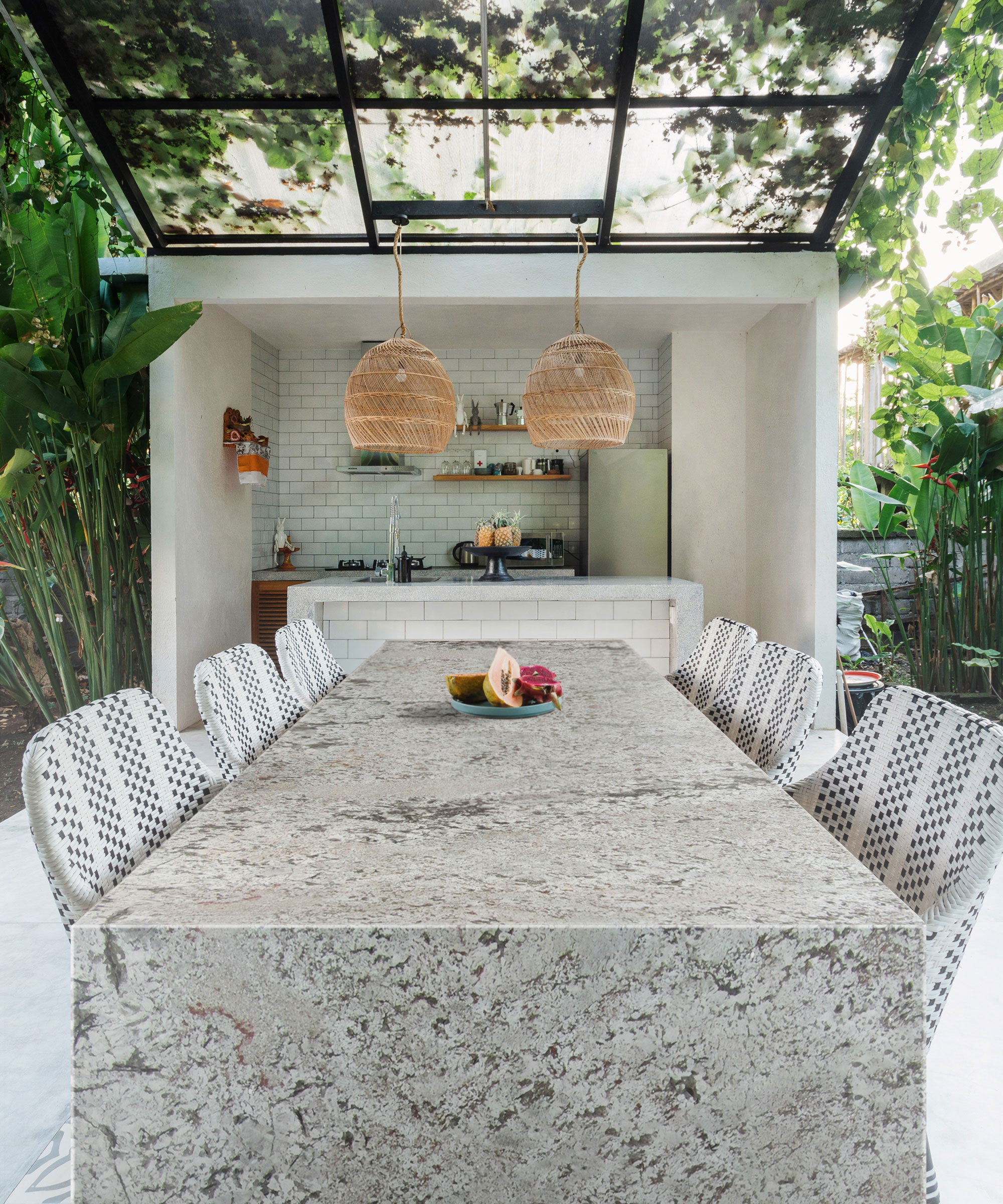
Whether you like a more formal outdoor dining table set-up and the full-on outdoor kitchen ideas experience or prefer hosting something more casual like a barbecue or pizza party a love of eating outdoors lends itself perfectly to zoning.
Alfresco cooking extends your living space outdoors and makes the garden so much more than just a place to grow plants. Consider what style and size of gathering you normally host and make this your starting point.
Take your outdoor cooking experience to the next level by incorporating a sleek outdoor kitchen into your zone. Consider including additional amenities such as a sink, countertop space, and storage, providing you with all the conveniences of an indoor kitchen while enjoying the great outdoors. Adding a retractable cover also helps to zone the space.
3. Play zone
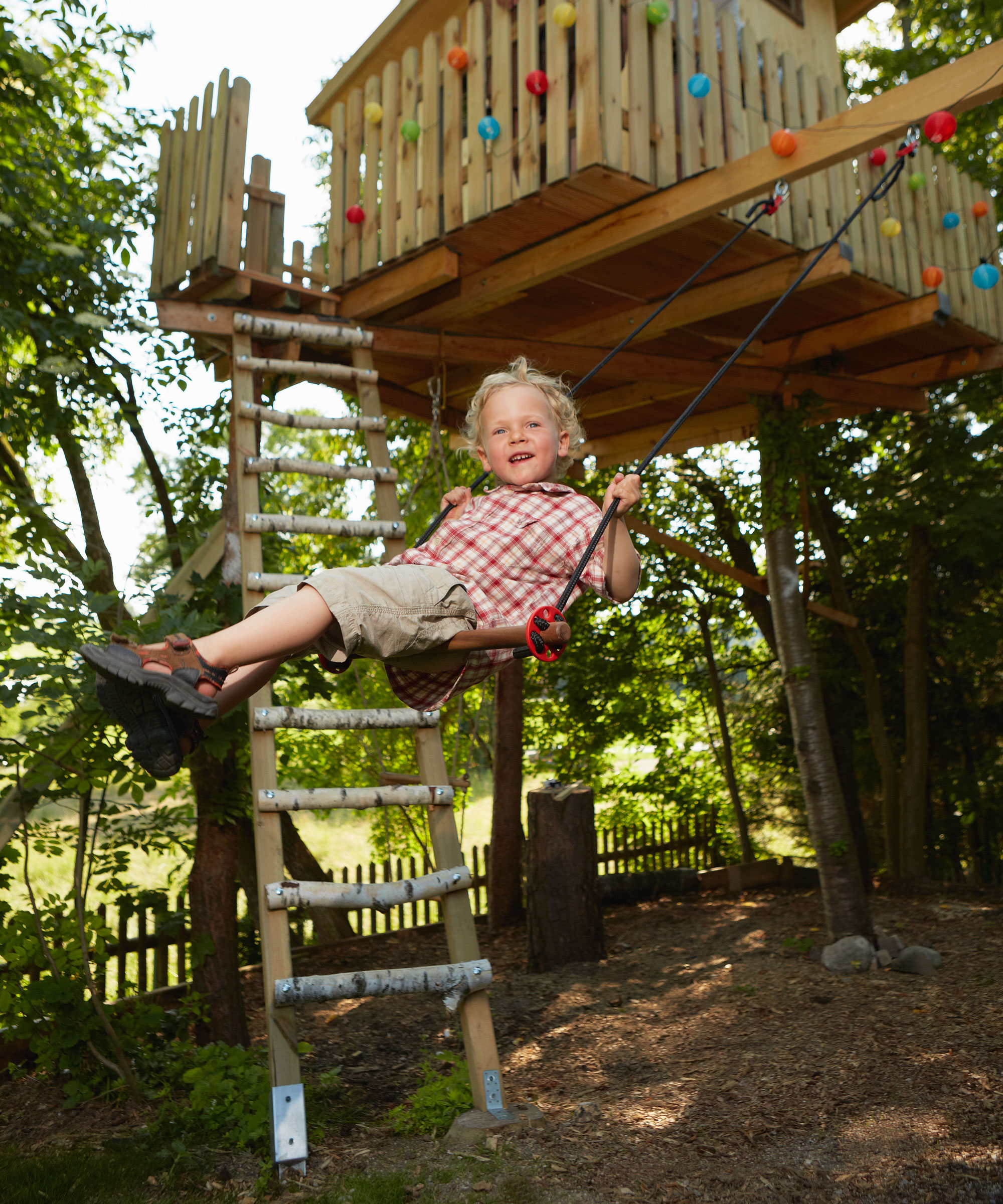
If you have children you might like to consider creating a separate play zone to keep the kids' toys, climbing frames and other equipment contained in one place rather than letting it spread out all around the garden.
With careful consideration a play area can be integrated into the garden in a stylish, non-obtrusive way. Choose an enclosed area for your play zone, perhaps incorporating a wooden pergola or children's playhouse as part of the screen boundaries. A climbing frame and swing can be added to the structure of the pergola if you choose co-ordinating materials such as wood so nothing jumps out visually.
Meanwhile a trampoline and sand pit can be added to the play zone too, sunk into the ground and surrounded by child-friendly planting for a seamless fit with the rest of the space.
4. Vegetable garden zone
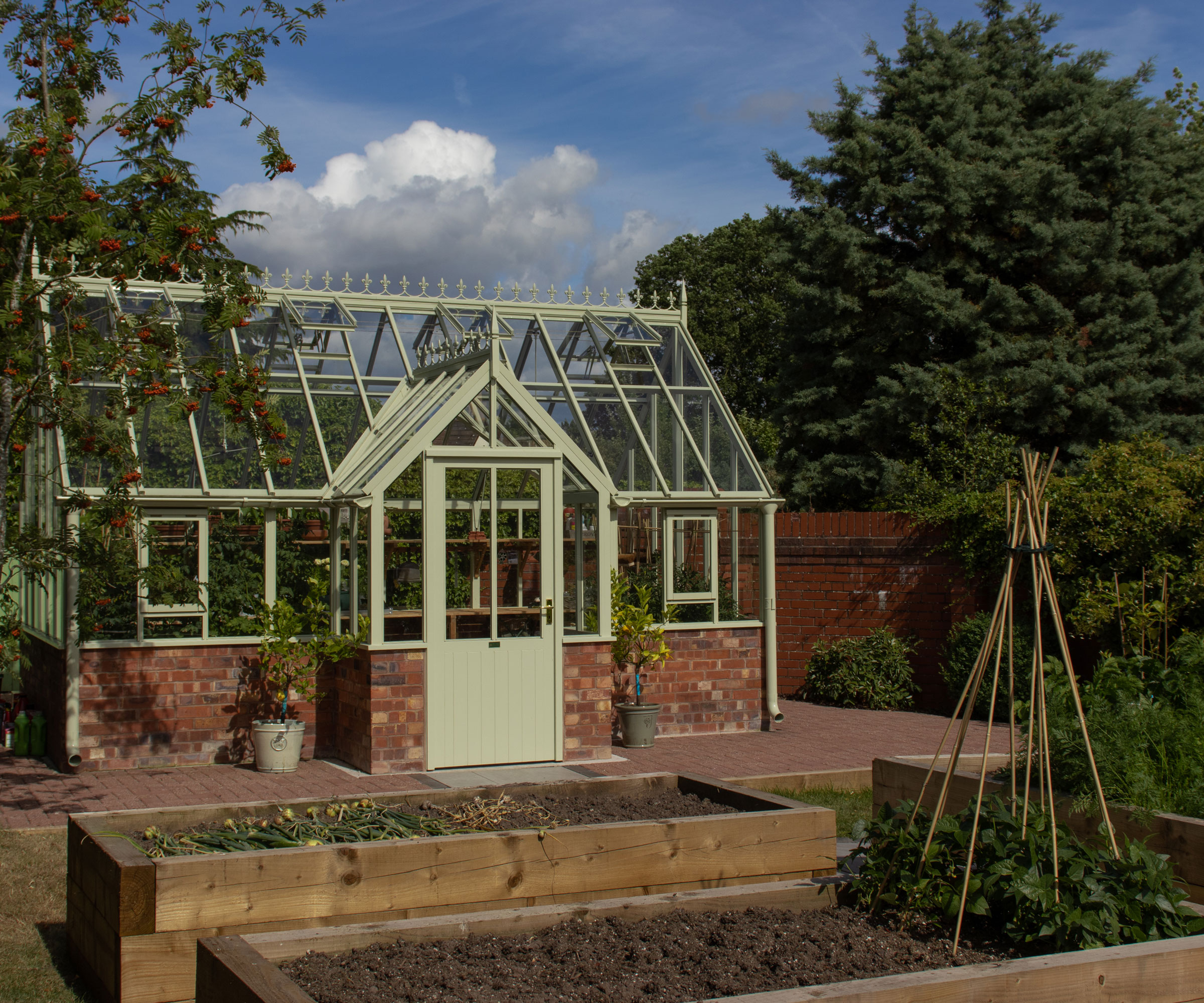
One of the most popular growing spaces for vegetables is at the end of the garden behind a screen of shrubs to create a zone that's separate from ornamental planting and lawn areas. It makes sense to put a greenhouse or potting area in the same space too, for easy access when transplanting home-grown seedlings, especially if you don't want to see this area from the house.
When choosing the ideal spot for a vegetable growing zone make sure it's sunny. Vegetables need plenty of sun for the best results, although there are some varieties that will tolerate partial shade. Also think about access to a water supply as vegetables are thirsty plants, so the closer your plot is to a water source, the better, especially during hot, dry weather.
Consider a series of raised beds to demarcate the zone. Find out how to build raised garden beds if you want to add professional looking landscaping to your vegetable garden.
5. Storage zone
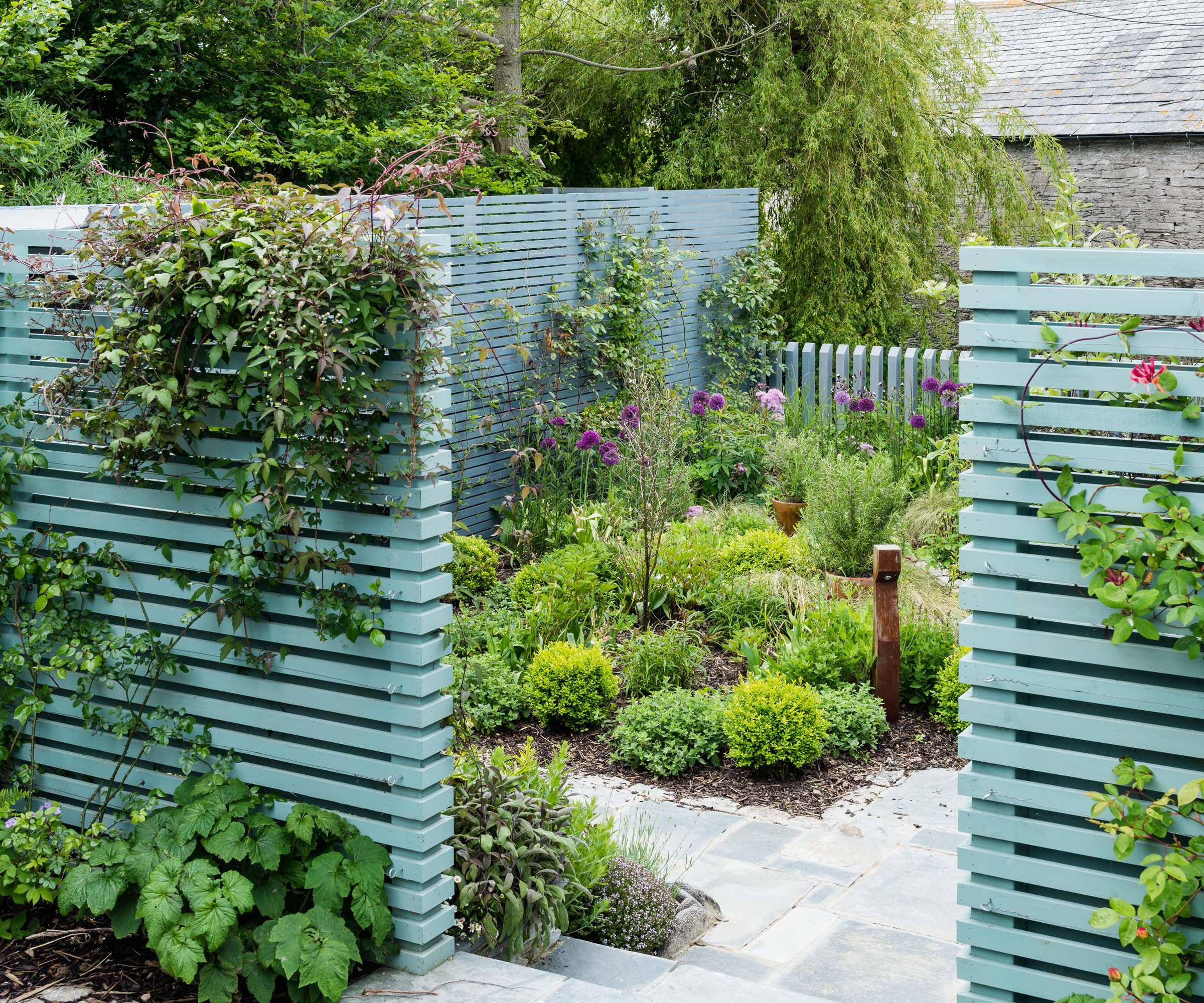
This is the zone for all the things in your garden you might want to hide as they detract from your garden design, such as a tool shed, bike storage or any other bulky paraphernalia, the composting area, and wheelie bins.
Grouping them together in one place means it's easier to hide them from view, especially if you choose a site at the end of the garden. You can use garden fence ideas, screens or pergolas to screen the view.
Alternatively try softscaping with plants as another option. A carefully selected row of pleached trees, a neatly clipped evergreen hedge, or tall ornamental grasses planted in raised beds all work as a visually pleasing natural screen when you're looking for ideas on how to zone a garden and want to disguise the less desirable elements.
FAQs
What is the best way to connect the zones?
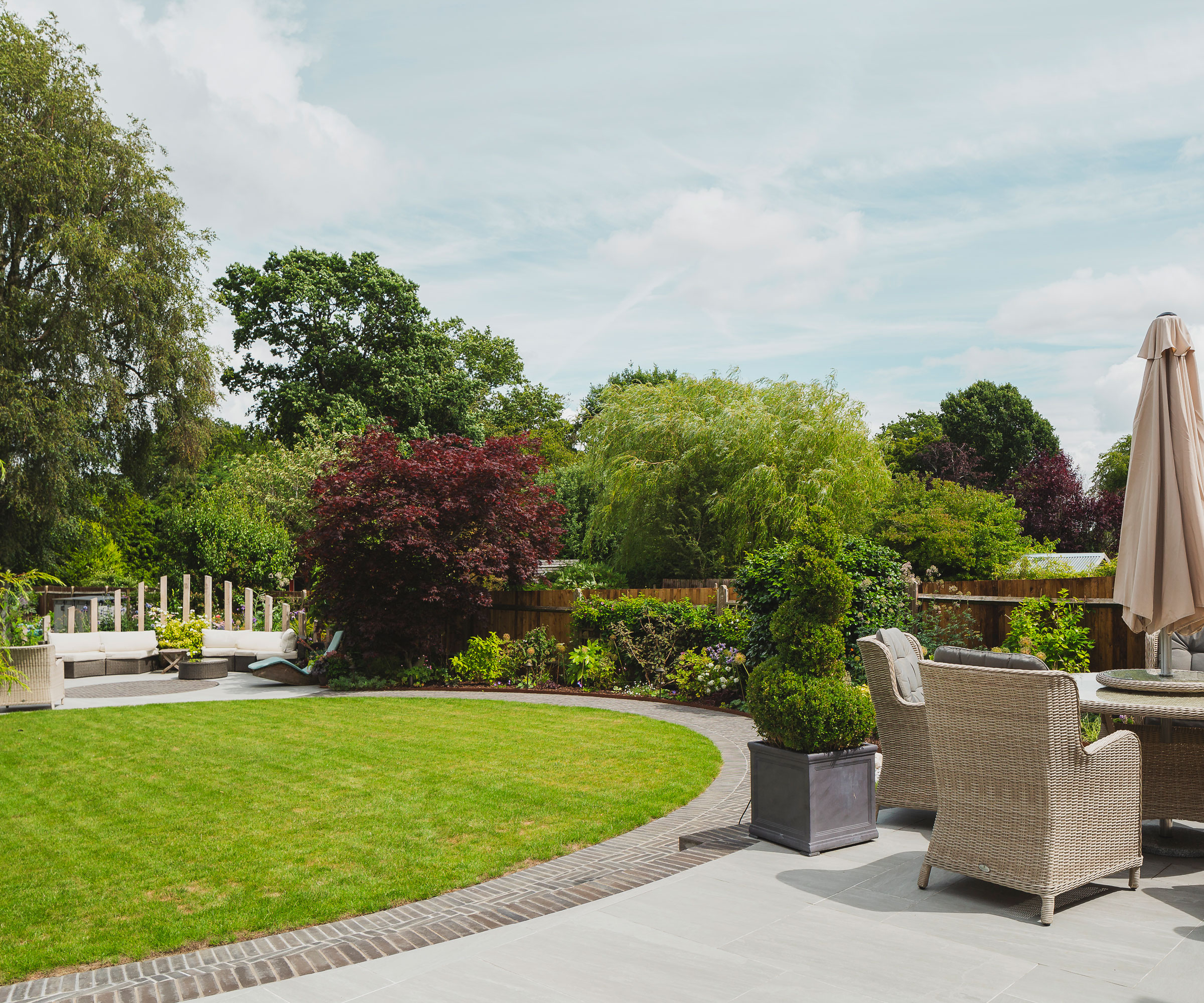
If you have several different zones in your garden you will want to know the best way to connect them to ensure easy flow and accessibility throughout the space, plus keep the design cohesive. Choosing the right hardscaping offers an obvious linking device to provide continuity and enables movement from one zone to the next.
“Combining different hard landscaping materials that harmonise aesthetically not only unifies the space, but allows more flexibility," says Steven Walley, managing director and garden design expert at London Stone. “This garden design features clearly defined zones leading onto a tranquil seating area in the middle of the garden. This clever design relies on the choice of a considered, refined material palette."
That's a wrap on how to zone a garden so now find out how to design a garden for a contemporary home and look at budgeting landscaping ideas too that will inspire your next garden makeover project.
Get the Homebuilding & Renovating Newsletter
Bring your dream home to life with expert advice, how to guides and design inspiration. Sign up for our newsletter and get two free tickets to a Homebuilding & Renovating Show near you.

Lifestyle journalist Sarah Wilson writes about flowers, plants, garden design and gardening trends for Homes & Gardens. She has studied introductory garden and landscape design and floristry, and also has an RHS Level 2 qualification in the Principles of Plant Growth and Development. She is a regular contributor to Homes & Gardens and Livingetc. She has also written for Real Homes, Modern Gardens, Country Living, and Country Homes & Interiors magazines. Her first job was at Elle magazine, during which time a trip to the beautiful La Colombe d'Or in St-Paul-de-Vence led to an interest in writing about all things botanical. Later as lifestyle editor of Country Homes & Interiors, she loved the captivating country gardens that were regularly featured.
